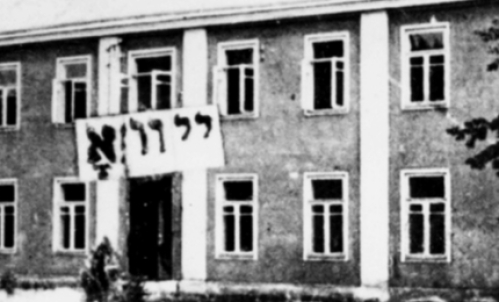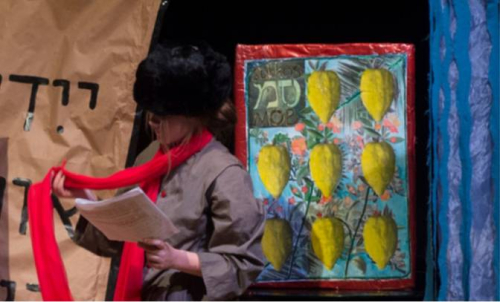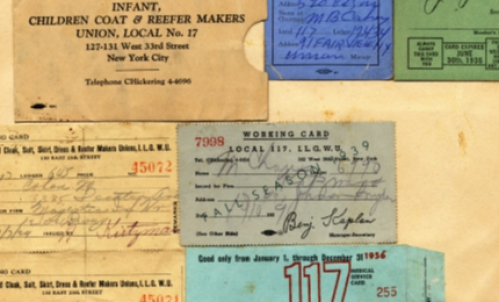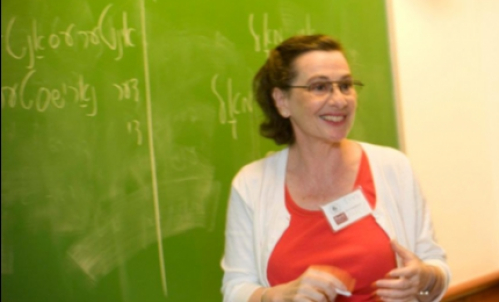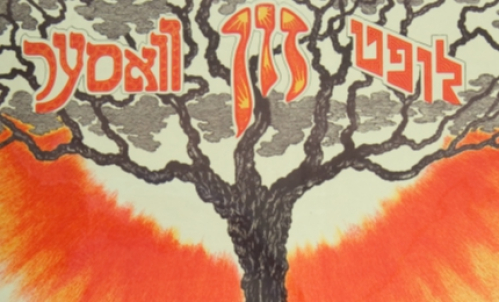Archaeological discoveries at the site of Vilna's Groyse shul (Great Synagogue)
This past summer, a project of great significance for the preservation of the Jewish heritage in Lithuania got underway in Vilnius: an archaeological exploration at the site of the Great Synagogue, damaged by the Nazis and destroyed by the Soviets after the war.
Dr. Richard A. Freund, Professor of Jewish History and the Director of the Maurice Greenberg Center for Judaic Studies at the University of Hartford, and co-director of the archaeological project responded to emailed questions from YIVO’s Roberta Newman.
RN: Tell me about the Great Synagogue archaeological project. What is being done at the site of the Great Synagogue in Vilnius?
RF: The official name of the project is “The Great Synagogue and Shulhoyf of Vilna (Vilnius) - Vilniaus Didžioji Sinagoga.”
There are now nine institutions in Israel, Lithuania and the United States involved in this collaborative project. Jon Seligman and Zenonas Baubonis are the lead Israeli and Lithuanian archaeologists respectively and they have been working on this project for the past five years. They did three probe pits in 2011 where the front of the Great Synagogue would have stood on Zydu Street in Vilna and discovered that there was an enormous potential for excavations.
RN: What has the project uncovered so far?
RF: They discovered first that there was something to excavate. We have found the steps leading down into the synagogue and the main bimah [reader’s platform]. Often when a site has been destroyed and built over it is hard to know if there is anything left to excavate. The Great Synagogue and Shulhoyf [synagogue courtyard] were mostly intact throughout World War II. The synagogue was ransacked but still stood in 1944. It was demolished by the Soviets in 1957 and a school was built on top in 1964. Elements from the synagogue were recovered and are displayed now in the Tolerance Center of the Vilna Gaon State Jewish Museum of Lithuania. The reason why we were attracted to work on the site is because the Great Synagogue has an unusual architectural feature that may actually still preserve some of the cultural material below the surface. The synagogue was built some two floors below street level in order to create the sense of greater height for the roof. What that means is that when the Soviets destroyed it, they may not have destroyed the foundations of the synagogue.
We were working especially this summer on what seemed to us to be an important location in the back of the school: the bathhouse and mikve [ritual bath]. This site would have been located even further below the surface and probably was linked with the sewer and water systems and would not have been easy to destroy so it was probably just filled in.
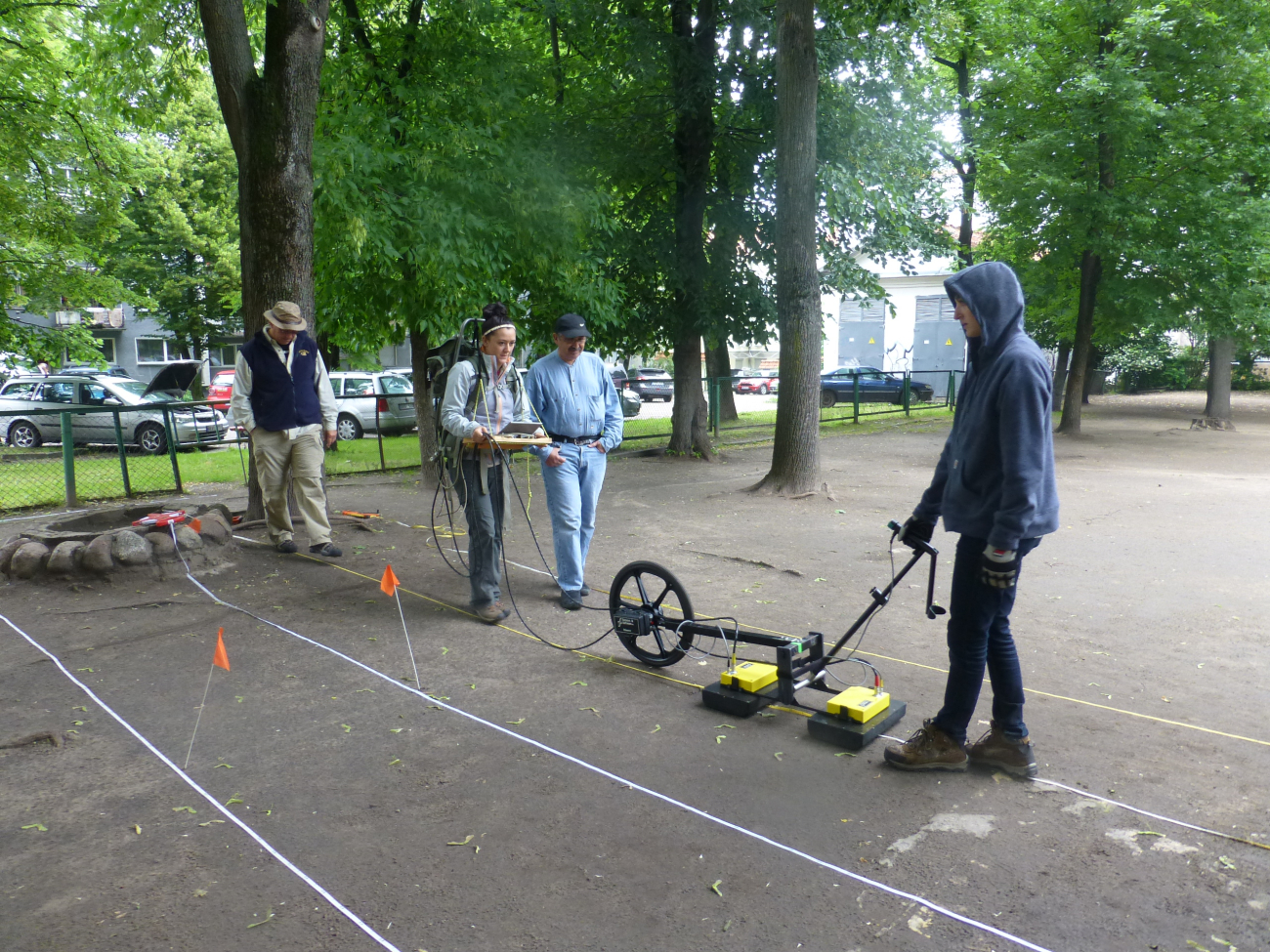
(student), Dr. Richard Freund, Nicole Awad (student). (Courtesy of Richard Freund)
RN: What will be done at the site in the future? What will happen to any artifacts discovered there?
RF: We were brought in to map the sub-surface of the entire area of the Great Synagogue. In one week we were able to strategically map a site which is the size of a football field to see where excavations might be done in a “pin-point” manner to excavate areas that are excavatable without disturbing the school. The Tolerance Museum, the Vilnius University, the Jewish Community, and the Cultural Ministry are all involved in the project. All artifacts will be registered, photographed, and made available for exhibition. This material is of great significance. The material culture of the Jews of Vilna adds immeasurably to the literary culture which has been assembled at YIVO. Before I went to Vilna, I went and spent a day at YIVO looking at the photographic archives to gain clues about where we would be working. Our work is ongoing work since there are other areas of the Shulhoyf and the surrounding area of the Great Synagogue that we will do in the coming years. This is a collaborative work with architects, art historians, museum specialists, archaeologists, historians, geophysicists, and cartographers (and of course students!) all working together to assess the information. Thanks to a grant from the U.S. Commission on the Preservation of America’s Heritage Abroad we were able to come and do the work as part of our university research projects. In the coming year I will be looking for additional grants to support our researchers going to the field.
RN: What is the history of this project and why do you think it is finally getting going now?
RF: This project has been in the works for a while. It started at the end of the Soviet era with a competition to see how the Great Synagogue of Vilna might be properly memorialized. Now that it has most of the major collaborative institutions in Vilna working together with the Cultural Ministry and the Jewish community it is seen as a group effort, and archaeology is a pillar of the project.
RN: Under whose auspices is the project taking place? Who are the other team members?
RF: The lead Israeli archaeologist, Dr. Jon Seligman of the Israel Antiquities Authority, met me at an archaeology conference last year and had seen our work in many excavations in Israel. He invited us to be involved. The project is licensed by Lithuanian State Archaeological Authorities and we received a license for the 2015 work. The University of Hartford has pioneered a collaborative group technique in archaeological excavations that allows us to map the entire sub-surface of a site using non-invasive technologies such as ground penetrating radar and electrical resistivity tomography (ERT is like a MRI for the ground) in a short period of time before major excavations take place. We have been working with the Dean of Science at Duquense University in Pittsburgh, Professor Philip Reeder, as our lead cartographer and Ground Penetrating Radar specialist, Professor Harry Jol, from the University of Wisconsin, Eau Claire. One of our team members is a geophysicist with one of the largest gas and oil companies in the world, WorleyParsons, Inc. in Calgary, Canada. They bring their equipment (on loan to the University of Hartford) and we also bring our students to work in the field, and the entire experience is one that they are writing about in the field. The technologies use different techniques to look down below the street or location down to 30-60 feet below the surface depending on the technique. It can differentiate different types of materials below the surface and identify architectural features. We can assess on site where there are archaeological or architectural discoveries to be made and then suggest where to excavate. The type of work we do is something that is relatively new in archaeology. Major excavations can be expensive, disruptive, requiring large groups of workers and supervisors over many years. Especially when working in a sensitive or urban area, our group provides a scientific map with GPS locations that can be opened and closed and returned to over years.
We have done over 30 sites worldwide (including the extermination camp Sobibor in Poland). This summer, in addition to the Great Synagogue of Vilna, we worked on the Church of the Annunciation (Greek Orthodox) in Nazareth, Israel and discovered an ancient mosaic floor buried underneath the 18th-century church there. We are also currently working in Rhodes, Greece on synagogues that were destroyed in World War II. We have a team of researchers who have been working together for twenty years and have state of the art equipment and we are vetted and licensed by the archaeological authorities in each country that we work in.
RN: What special significance does this project have for the Jewish community in Lithuania and for all Lithuanians?
RF: Jon and I met with the Jewish Community leadership, especially Faina Kukliansky (President) while we were working this summer in Vilna. They presented us with some of their great needs for the community and we offered to use the ground-penetrating radar device for some of the community’s projects when we return in 2016. It will, I think, be a wonderful collaboration for our team to involve the archaeologists and geoscientists in the projects of the Jewish community and in the Great Synagogue and Shulhoyf.
RN: You are also going to be working on another archaeological project in Lithuania: the excavation of mass graves in Paneriai, the locale of the mass murder of thousands of Jews from Vilna. What are the goals of that project?
RF: We took one afternoon from our research at the Great Synagogue and had a very heartfelt visit to the Paneriai site with our team and the staff from the Tolerance Center at the Vilna Gaon Jewish State Museum. Geophysics and especially our non-invasive sub-surface mapping techniques would definitely help identify more of the Paneriai site without excavations. The staff of the Tolerance Center explained some of the problems they have had in identifying all of the burial places in this forest area. One of the hallmarks of our projects has been that we can identify burial places without having to excavate them. This is a dignified way to identify areas where there were burials without violating them. We offered also to provide them with our researchers and technology for a subproject in 2016 to help them map some of unmapped areas in the forest where more killing pits are thought to be. With the Great Synagogue and Shulhoyf project, the Jewish community’s projects and Paneriai, 2016 will be a very busy time for the University of Hartford’s research team!
